#praesepe
Photo

The Beehive Cluster, M44 // Siegfried
#astronomy#astrophotography#stars#star cluster#open cluster#beehive cluster#praesepe#messier#messier 44#M44#NGC 2632#cancer
272 notes
·
View notes
Text
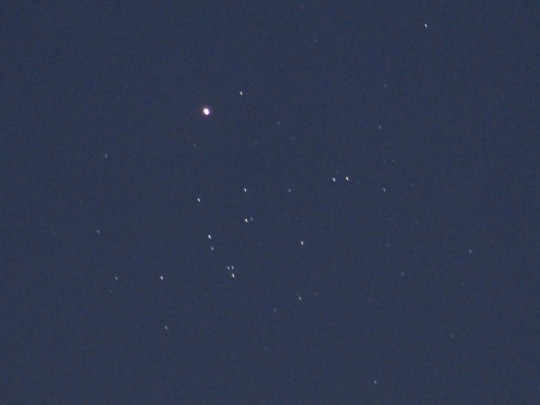


#mars #praesepe #火星 #プレセペ星団 #金星 #ふたご座 #イマソラ by #fz200 at #Tokyo どこからどこまでがプレセペ星団だか判らないんだけど、撮ってみた
20 notes
·
View notes
Photo









Puyo Puyo Vol. 3 Line Stickers
#puyo puyo#puyo puyo quest#upload#official#sfw#rafisol#sabik#praesepe#giselle#outlander miriam#baromett#algar#outlander nur#sandra#quyo
8 notes
·
View notes
Text









Puyo Puyo vol. 3 LINE stickers
#puyo puyo#puyo puyo quest#rafisol#sabik#praesepe#giselle#outlander miriam#baromett#algar#outlander nur#sandra#ramblings#sfw#puyoque#*
5 notes
·
View notes
Photo

Constellar Praesepe
“2 Level 4 ‘Constellar’ monsters
Once per turn, during the Damage Step of either player’s turn, when a ‘Constellar’ monster you control is attacking or being attacked: You can detach 1 Xyz Material from this card; that monster gains 1000 ATK, until the End Phase.”
9 notes
·
View notes
Photo

M44: The Beehive Cluster : A mere 600 light-years away, M44 is one of the closest star clusters to our solar system. Also known as the Praesepe or the Beehive cluster its stars are young though, about 600 million years old compared to our Sun's 4.5 billion years. Based on similar ages and motion through space, M44 and the even closer Hyades star cluster in Taurus are thought to have been born together in the same large molecular cloud. An open cluster spanning some 15 light-years, M44 holds 1,000 stars or so and covers about 3 full moons (1.5 degrees) on the sky in the constellation Cancer. Visible to the unaided eye, M44 has been recognized since antiquity. Described as a faint cloud or celestial mist long before being included as the 44th entry in Charles Messier's 18th century catalog, the cluster was not resolved into its individual stars until telescopes were available. A popular target for modern, binocular-equipped sky gazers, the cluster's few yellowish tinted, cool, red giants are scattered through the field of its brighter hot blue main sequence stars in this telescopic group snapshot. Dramatic diffraction spikes highlighting the brighter cluster members were created with string crossed in front of the telescope's objective lens. via NASA
744 notes
·
View notes
Photo

2023 June 10
Mars and the Beehive
Image Credit & Copyright: Rolando Ligustri
Explanation: This month, bright Mars and brilliant Venus are the prominent celestial beacons in planet Earth's western skies after sunset. Wandering through the constellation Cancer the Crab, the Red Planet was captured here on the evening of June 3 near the stars of open cluster Messier 44. Recognized since antiquity this nearby, naked-eye star cluster is also known as the Praesepe or the Beehive cluster. A swarm of stars all much younger than the Sun, the Beehive cluster is a mere 600 light-years distant. Seen with a yellowish hue, Mars is about 17 light-minutes away. On June 12/13 Venus will take its turn posing next to the stars of the Beehive cluster. But the dazzling light of Venus will make the Beehive stars difficult to see by eye alone.
∞ Source: apod.nasa.gov/apod/ap230610.html
152 notes
·
View notes
Text

Full Moon in Leo, January 25, 2024
'Aion'
Talon Abraxas
The Wolf Full Moon In Leo Will Give You A New Boost Of Energy
The energy of fixed star Praesepe during this full moon provides us with an opportunity to release our past and forgive ourselves and others for our fears. However, this energy can also bring emotions to a feverish high. It helps us to understand our feelings towards certain situations and relationships. Let us remember that this is a great chance for us to move beyond old wounds and create relationships that resonate with us on a profound level.
Since Leo governs the heart chakra, it’s essential to concentrate on what brings us joy and the individuals we choose to partner with in our lives. It’s a wonderful time to recharge our love batteries and acknowledge what we deserve and need in relationships. The full moon in Leo reminds us that we have the ability to change the way we relate to others and ensure that we receive the same level of love and care that we give. It’s important to recognize our own worth and not allow ourselves to be taken for granted or take others for granted. We should appreciate the wonderful qualities of those around us and recognize our own potential, which will help us understand that we are deserving of love and care from both ourselves and others.
The full moon in Leo is encouraging us to recognize our self-worth. Even if we may doubt ourselves, we are deserving of love. It is crucial to prioritize the relationship we have with ourselves, since it sets the foundation for any future love. It’s important to acknowledge that we are incredible people who deserve respect and shouldn’t tolerate those who don’t treat us accordingly. Remembering to move forward with the amount of affection and tenderness we deserve is vital. Above all, settling for anything less than amazing is not an option. You are the prize in any relationship, and you should never let anyone make you feel like you are not. To cultivate the kind of relationships you want with others, it’s important to make sure you’re communicating effectively. Take advantage of the energy of the full moon to show appreciation for the people in your life — but mostly for yourself.
29 notes
·
View notes
Text
Ensemble Stars!! DREAM LIVE -8th Tour "Praesepe #Cancer"-
Osaka: 5-7/4/2024
Makuhari: 24-26/5/2024
youtube
Trickstar / ALKALOID / Crazy:B / UNDEAD / Ra*bits / 紅月 / Double Face / MaM
#dlarch.txt#ensemble stars#enstars#dream live#dl8 preasepe cancer#trickstar#alkaloid#crazy:b#undead#ra*bits#akatsuki#double face#mam
44 notes
·
View notes
Text
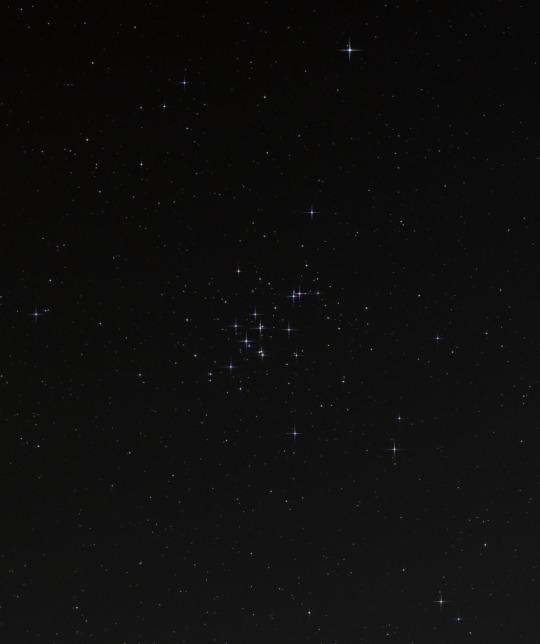
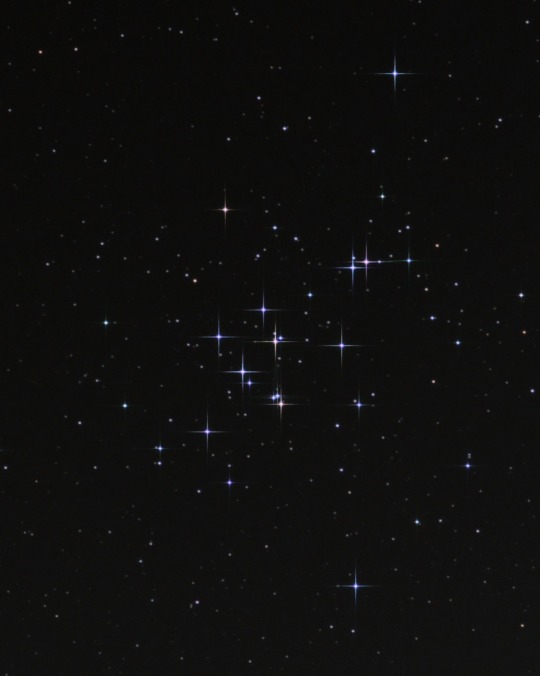
Beehive Cluster//Praesepe//Messier 44. March 30th, 2024.
10 notes
·
View notes
Text

The Beehive Cluster, M44 // Jesse Lichtenberg
#astronomy#astrophotography#stars#star cluster#open cluster#beehive cluster#praesepe#messier#messier 44#M44#NGC 2632#cancer
51 notes
·
View notes
Text
A Medieval Christmas
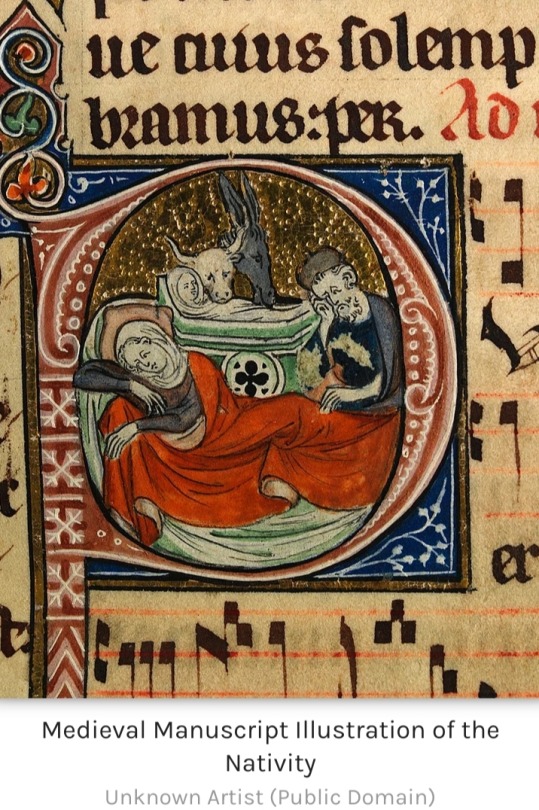
By Mark Cartwright
1 December 2018
Christmas was one of the highlights of the medieval calendar not only for the rich but also for the peasantry.
For the longest holiday of the year, typically the full twelve days of Christmas, people stopped work, homes were decorated and a Yule log burned in the hearth.
Gifts were exchanged, colourful church services enjoyed, and merry feasts were eaten by all where there was better food and more of it than at any other time in the year.
There were plenty of songs, dancing, pantomimes, and games, too. For many, just as today, Christmas was the best of times.
The European medieval calendar was not short of holidays: each season had its own special Christian celebration, often based on older pagan traditions.
Medieval holidays were a chance to have a much-needed rest from the usual daily toil and to socialise at family meals where the typical dreary menu of the poor was replaced by such rarities as meat and fish, and the table of the rich was adorned with exotica like roast peacock.
Christmas was the longest holiday of the year by far and lasted from the night of Christmas Eve, the 24th of December, to the Twelfth Day, Epiphany, on the 6th of January.
Mid-winter was a time of year, which saw a lull in agricultural activity, and consequently, many peasants were permitted by their lord to have the entire two weeks off.
The season also involved gift-giving and decorating the home with garlands and wreaths of winter foliage.
As one description of 12th-century CE London by William Fitzstephen records:
"Every man's house, as also their parish churches, was decked with holly, ivy, bay and whatsoever the season of the year afforded to be green."
(quoted in Gies, 100)
Holly, with its glossy dark green leaves and bright red berries, has been considered the ideal winter decoration since antiquity.
Ancient Celtic druids thought it sacred and able to ward off evil spirits, while the Romans used it as a gift to show esteem and goodwill.
Mistletoe is another long-used decoration, which ancient people thought a bringer of fertility, protector of crops, and something that kept away witches.
Long before the Christmas tree took centre stage in the 19th century CE, a double ring of mistletoe was the centrepiece of many a home's decorations, under which couples could kiss, removing the jewel-like berries with each peck.
Over time, the traditional church services for major Christian holidays became more elaborate and Christmas was no exception.
The Church at Christmas

Naturally, in the very religious communities of medieval times, the local church was a focal point for the Christmas celebrations and services were well-attended by all classes.
One development from around the 9th century CE was 'troping,' which was to add extra dialogues and songs to the service.
An example of troping in the Christmas celebration was an elaboration on the question, which choirs sang:
Quem quaertitis in praesepe? ('Whom do you seek in the manger?').
One half of the choir would sing the line and then the other half did.
This eventually led to a dramatisation using individual speakers and actors, which resulted in the presentation of nativity plays with the Magi and King Herod playing prominent roles.
Another play that became popular in church services of the festive period was The Prophets in which a priest conducted a dialogue with various prophets such as Jeremiah, Daniel, and Moses.
Choir boys played dressed up bit-parts like a donkey or devil.
The Feast of the Holy Innocents (Childermas) on 28th of December commemorated King Herod's failed attempt to murder the infant Jesus by ordering the execution of all children in Bethlehem under two years of age.
The church on this day, perhaps bizarrely considering the gravity of the occasion, indulged in a bit of traditional festive role-reversal with choirboys taking the place of the bishop and other higher clergy to conduct services and even to lead a torchlit procession.
The celebration of the Feast of the Circumcision, held on the 1st of January, was even more outlandish, which perhaps explains its other name of the 'Feast of Fools.'
Minor clergy would wear their clothes inside out and lead an ass into church where, upon arrival at the altar, they would burn incense made from old shoes, eat sausages, drink wine and make the sounds of a donkey.
The local clergy, if not invited to their nearest lord's castle, celebrated with a fine meal of rarities at home.
Larks, ducks, and salmon could appear on the menu, or perhaps a kid. We know one abbot of Ramsey Abbey in England reserved for himself a wild boar each Christmas dinner.
Even monks had a treat or two at Christmas. The diet of those in medieval monasteries was quite good anyway but Christmas feasts included more meat and fish than usual.
We also know that at monasteries such as at Cluny Abbey in France, the monks received a new gown and had one of their twice-yearly baths at Christmas (any more was not permitted).
Christmas in a Manor
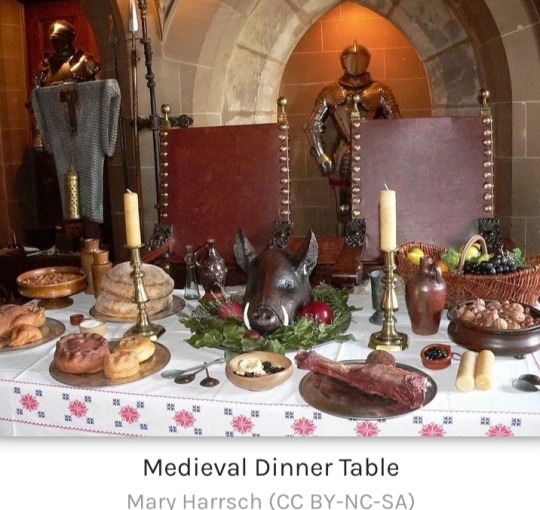
Amongst the landed aristocracy, comfortable in their castles and manors, Christmas gifts such as fine clothes and jewellery to wear for the season were exchanged on the 25th of December.
There was another round of gift-giving on the 1st of January, too. Known as 'first-gifts,' they were thought to be an omen of a person's fortune in the coming year.
Much like today, though, the real joy of Christmas for many was the food on offer.
Usually held in the Great Hall of a castle or manor, the setting for the Christmas meal for the aristocracy was suitably splendid with high wood-beam ceilings and at least one roaring fire.
The hall was made even more impressive with festive garlands of holly, ivy and other seasonal greenery.
The tables were set with the usual knives, spoons and a thick slab of one-day-old bread (a trencher or manchet) to be used by way of a plate for meat.
Christmas diners were also treated to the luxury of a change of tablecloth after each course.
Two diners shared a bowl for washing hands (everything except liquids was eaten with the fingers), another bowl for soups and stews, and a small bowl of salt.
Served as an early lunch, the first course was typically a soup, broth or weak stew with some meat at the bottom.
The second course might be a vegetable stew (porray) of leeks and onions.
The rich were fortunate enough to have meat as their next course on ordinary days – rabbit, hare and chicken, for example – but Christmas saw finer meat delicacies, fish (e.g. salmon, herring and trout) and seafood (e.g. eels, oysters and crab) courses presented to the guests.
Meats were roasted on a spit over an open fire. Besides legs of beef and mutton, there was veal, venison, goose, capon, suckling pig, duck, plover, lark and crane, to name a few.
A special Christmas dish the cooks might prepare to wow the guests included a boar's head on a platter or a swan or peacock roasted in its feathers.
Sauces added more flavour to many dishes and, thickened with breadcrumbs, they contained wine or vinegar, and herbs and spices.
Dessert consisted of thick fruit custards, pastries, nuts, cheese and luxury fruits like oranges, figs and dates.
There were also entremets – various decorated nibbles glazed with sugar and honey – which were served before the dessert course at Christmas and other feasts.
For drinks, there's red and white wine (from a cup shared with one's dining partner), which was drunk young as it had a short shelf-life.
Wine was often mixed with water or sweetened with honey or sugar.
Alternatives were cider and ale, although the latter, made from grains and fermented with yeast, was considered a lower class drink.
Beer made using hops would only appear in the late Middle Ages. Dessert might be accompanied by a jug of spiced wine.
While all this feasting was going in the Great Hall, the servants of a castle were not forgotten as traditionally they were given better food at Christmas such as geese and hens.
Finally, the leftovers of the feast were taken outside to the waiting poor.
The manor dining table might have had some surprising guests as serfs on the castle's estate did get to live it up a little at Christmas when, by tradition, they were invited to the manor on Christmas day for a meal.
On some estates, the invitations were restricted to just two lucky recipients.
Traditionally, one of the poorest and one of the wealthiest peasants who could also invite two friends along.
Unfortunately, most peasants invited to their local lord's abode had to bring along their own plates and firewood, and of course, all the food had been produced by themselves anyway.
However, they did get free ale and it was at least a chance to see how the other half lived and relieve the dreariness of a country winter.
A Peasant Christmas
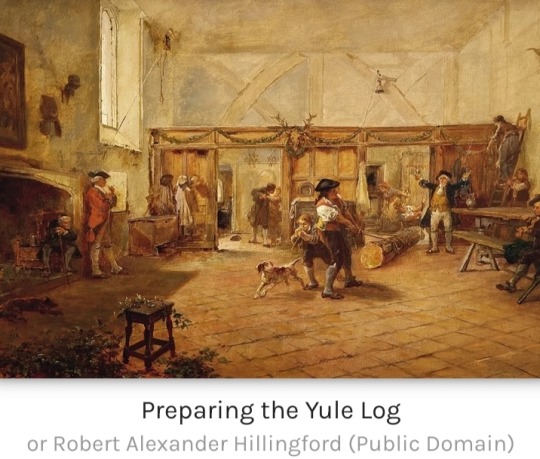
A peasant's Christmas was obviously rather less grand than that enjoyed in the local manor or castle, and for them, the season did not start well.
Serfs, already subjected to all manner of odd fees over the year, were expected to give a 'gift' to their lord at Christmas of extra bread, eggs, and perhaps, even a valuable rooster or a couple of hens.
In contrast, free labourers on the estate, especially the more important ones such as the estate's shepherd, swineherd and oxherd, received presents from the lord, typically a bonus of food, drink, clothes and firewood.
It is a tradition, which continued into later centuries, when household servants received a box of gifts on the 26th of December, hence the name of that day in Britain: Boxing Day.
Children's gifts from their humble parents included such simple toys as spinning tops, whistles, stilts, marbles, dolls, and figures made from wood or clay.
Peasants would have decorated their homes much as aristocrats did, with greenery such as holly being readily available for those who searched for it.
An old, possibly pagan tradition persisted, which was the burning of a Yule log.
Actually, a sizeable piece of tree trunk, the log was lit on Christmas Eve in homes of all kind and kept burning for the twelve days of Christmas.
For the special meals of the holiday, peasants ate that rare delicacy of – usually boiled – meat, treated themselves to cheese and eggs, ate cakes and drank ale.
There was certainly lots — the brew typically made by peasant women.
The 1st of January was important as people hoped for better fortune in the coming year.
A superstition developed, like the gifts the rich exchanged on this day, that it was terribly important who the first person to visit one's home was on New Year's Day.
Called 'first-footing,' certain characteristics were considered desirable in this first visitor: a male with a dark complexion, perhaps fair-haired and, best of all, with flat feet.
Christmas Entertainment

There were all kinds of entertainments on offer over the Christmas period.
Drinking alcohol was the most popular of all. The fact that merry-making could easily get out of hand is attested by the common custom of lords paying special watchmen to guard their estates in case of riots.
A record from an estate near Saint Paul's Cathedral in London tells us that watchmen were set from Christmas Day to Twelfth Night.
These men were recompensed by 'a good fire in the hall, one white loaf, one cooked dish, and a gallon of ale [per day]' (quoted in Gies, 208).
Even if drinking such large quantities was relatively common and the ale weak, with four and a half litres of ale per watchman, it is a wonder they themselves did not get a bit rowdy.
More genteel festive entertainment included monks touring and performing plays in private residences, which told key episodes from the Bible, especially, of course, seasonal topics such as the Massacre of the Innocents by Herod.
Similarly, in cities, medieval guilds put on public pageants where wagons went through the streets carrying people dressed as personalities from the Bible's Christmas story.
Troupes of masked pantomime artists known as mummers went through the streets, too, accompanied by bands of musicians.
Sometimes numbering over 100 revellers, they dressed in outlandish costumes as lords, cardinals and knights, and even ventured into people's homes to dance and play dice.
Receiving food and drink in return for their entertainment, mummers often performed short plays with scenes from familiar legends such as Saint George and the dragon.
There were games like cards and dice (which included a bit of gambling) and board games such as chess, checkers, backgammon and Nine Men's Morris.
Traditional Christmas games included the 'king of the bean,' which permitted the person who found a hidden bean in the bread or a special cake to be 'king' or 'queen' of the feast.
That honoured person then had the right to lord it over everyone else who often had to mimic whatever action the king or queen did at the table.
The game was traditionally played on Twelfth Night and was an example of the tried-and-tested role-reversal hilarity, which went back to Rome's pagan December festival of Saturnalia.
Christmas meals were followed by more drinking of wine or beer, singing of songs, including carols, and group dancing to music from pipes, flutes, lutes and drums.
Professional acrobats and jongleurs (minstrels) performed their tricks and witty verses.
Folktales were told, embellished and re-told every year, puppet shows were put on, and people played parlour games, many of which survive today such as blind man's buff and prisoner's base.
Another such game involved one member of the party being dressed as a saint while everyone else had to make them an offering (no doubt, an amusing one), which they had to do without smiling and resisting the antics of the saint or else they themselves became the saint.
Another game was 'The King Who Does Not Lie' when the 'king of the feast' might ask a question to any guest who, if they answered truthfully, could ask a question in return.
Such games were, of course, a chance to show one's wit and skill at wordplay, to embarrass a friend or to find out a sweetheart's inclinations.
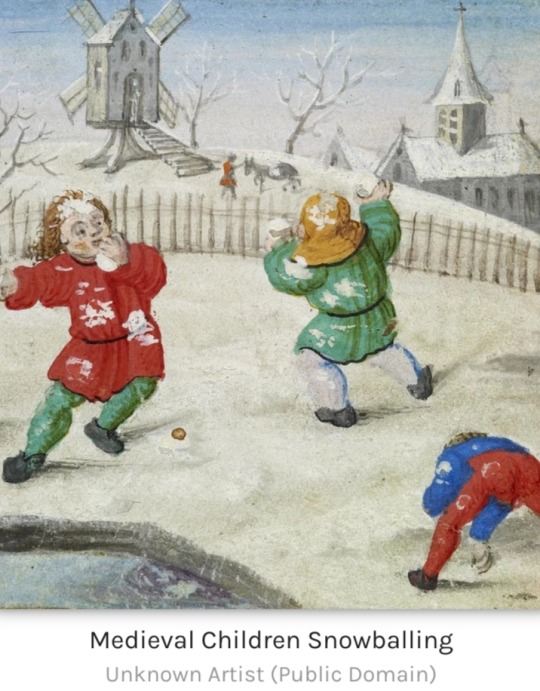
For the more energetic, there were sports such as feats of strength, archery, wrestling, bowling, hockey, and medieval football where the goal was to move the ball to a predetermined destination and there were few, if any, rules.
Sliding on frozen lakes was a popular activity in winter, too.
Alternatively, by strapping the shin bones of a horse to the feet and grabbing a pole for propulsion, the courageous could try ice skating.
The End of the Holiday
Christmas through the ages has witnessed festive fun and frolics, and so, inevitably, the return to ordinary working life must have been something of a shock in the medieval period after this longest of holidays.
However, even then peasants made a celebratory game of the proceedings by, for example, holding a plough race at sunrise on the first Monday after Epiphany, known as Plough Monday.
There was another tradition, perhaps again to lighten the burden of returning to the daily toil, on 7th January, also known as Saint Distaff's Day.
This day was “a day of carnival, an occasion for 'misrule,' for 'comic battles between the sexes' in which men set fire to women's flax and women made sure men got soaked” (Leyser, 225).
#Medieval Christmas#Christmas#holly#mistletoe#Christmas Tree#medieval times#troping#Feast of the Holy Innocents#Childermas#Feast of the Circumcision#Feast of Fools#first-footing#Boxing Day#Twelfth Night#Plough Monday#Saint Distaff's Day
11 notes
·
View notes
Text

7☆ Gold Praesepe
7 notes
·
View notes
Text
English Translation of Cancer Schiller's moves from Saint Seiya Omega.
I did this on the SSZ server on Discord yesterday, so thought I'd also post here.
冥土凋落 - Meido Choraku
Decayed Underworld
積尸気冥界波 - Seki Shiki Meikai Ha
Praesepe* Underworld Waves
*Seki Shiki seems to be translated as Praesepe
(Waves of the Accumulated Corpses in the Underworld )
冥土引導 - Meido Indo
Underworld Guide
積尸気冥界輪舞 - Seki Shiki* Meikai Rinbu
Praesepe* Underworld Round Dance
*Seki Shiki seems to be translated as Praesepe
(Round Dance of the Accumulated Corpses in the Underworld)
His profile and moves can be found here
3 notes
·
View notes
Text

Unusual stellar evolution
Astronomers have found evidence that some stars boast unexpectedly strong surface magnetic fields, a discovery that challenges current models of how they evolve.
In stars like our sun, surface magnetism is linked to stellar spin, a process similar to the inner workings of a hand-cranked flashlight. Strong magnetic fields are seen in the hearts of magnetic sunspot regions, and cause a variety of space weather phenomena. Until now, low-mass stars – celestial bodies of lower mass than our sun that can rotate either very rapidly or relatively slowly – were thought to exhibit very low levels of magnetic activity, an assumption which has primed them as ideal host stars for potentially habitable planets.
In a new study, published today in The Astrophysical Journal Letters, researchers from The Ohio State University argue that a new internal mechanism called core-envelope decoupling – when the surface and core of the star start out spinning at the same rate, then drift apart – might be responsible for enhancing magnetic fields on cool stars, a process which could intensify their radiation for billions of years and impact the habitability of their nearby exoplanets.
The research was made possible due to a technique that Lyra Cao, lead author of the study and a graduate student in astronomy at Ohio State, and co-author Marc Pinsonneault, a professor of astronomy at Ohio State, developed earlier this year to make and characterize starspot and magnetic field measurements.
Although low-mass stars are the most common stars in the Milky Way and are often hosts to exoplanets, scientists know comparatively little about them, said Cao.
For decades, it was assumed that the physical processes of lower mass stars followed those of solar-type stars. Because stars gradually lose their angular momentum as they spin down, astronomers can use stellar spins as a device to understand the nature of a star’s physical processes, and how they interact with their companions and their surroundings. However, there are times where the stellar rotation clock appears to stop in place, Cao said.
Using public data from the Sloan Digital Sky Survey to study a sample of 136 stars in M44, a star crib also known as Praesepe, or the Beehive cluster, the team found that the magnetic fields of the low-mass stars in the region appeared much stronger than current models could explain.
While previous research revealed that the Beehive cluster is home to many stars that defy current theories of rotational evolution, one of Cao’s team’s most exciting discoveries was determining that these stars’ magnetic fields may be just as unusual – far stronger than predicted by current models.
“To see a link between the magnetic enhancement and rotational anomalies was incredibly exciting,” said Cao. “It indicates that there might be some interesting physics at play here.” The team also hypothesized that the process of syncing up a star’s core and the envelope might induce a magnetism found in these stars that would have a starkly different origin from the kind seen on the sun.
“We’re finding evidence that there’s a different kind of dynamo mechanism driving the magnetism of these stars,” said Cao. “This work shows that stellar physics can have surprising implications for other fields.”
According to the study, these findings have important implications for our understanding of astrophysics, particularly on the hunt for life on other planets. “Stars experiencing this enhanced magnetism are likely going to be battering their planets with high-energy radiation,“ Cao said. “This effect is predicted to last for billions of years on some stars, so it’s important to understand what it might do to our ideas of habitability.”
But these findings shouldn’t put a damper on the search for extraplanetary existence. With further research, the team’s discovery could help provide more insight into where to look for planetary systems capable of hosting life. But here on Earth, Cao believes her team’s discoveries might lead to better simulations and theoretical models of stellar evolution.
“The next thing to do is verify that enhanced magnetism happens on a much larger scale,” said Cao. “If we can understand what’s going on in the interiors of these stars as they experience shear-enhanced magnetism, it’s going to lead the science in a new direction.”
The study was supported by The Alfred P. Sloan Foundation, the U.S. Department of Energy Office of Science and the National Science Foundation. Jennifer van Saders from the University of Hawaii was also a co-author.
11 notes
·
View notes
Text
Day 488 : Celebration of the joint live tour in Osaka !

Hokuto : Everyone , Trickstar will be seeing you today.
Makoto : Today is the last day of the "DREAM LIVE -8TH Tour Praesepe #Cancer " in Osaka ♪

Subaru : I can't believe it's already the last day ~ I hope you can enjoy today's live as much as you can !
Since it's taking place in Osaka , the city of comedy , we're fully prepared for liven up the venue ♪

Mao : Haha , let's put on a great show that will stay in everyone's memory.
Subaru : I hope everyone has a great time watching the live there or live viewing or streaming ☆

Makoto : Now , we'll show you the culmination of our hard work . Is everyone ready ?
Mao : Let's make the last Osaka performance the best live ever ! Come have fun with us ♪
#mao isara#makoto yuuki#subaru akehoshi#hokuto hidaka#idk if tling this is very useful bc dreamlive isnt very accessible to non jp fans#tl note : subaru says live viewing very literaly bc he says raibubyūingu and idk i thought it was funny#also osaka is know for their comedy duo act of manzai with boke and straight man which is what trickstar do all the time :)
5 notes
·
View notes